Abbaye de Beauport
Endings are always bittersweet. There is joy and excitement in the new adventure that awaits, but also a sadness that we leave behind wonderful memories and experiences that can’t be replicated.
The final days in Brittany have officially arrived with the return of our lovely hosts. We were grateful to be able to spend some quality time with them and our new friends down the street for a few more days. On top of that, we thought we would squeeze in one more experience before making our way across the country. The options fell between another lovely “Chateau” or a coastal city with an Abbey and some great views. We chose the latter.
Weather was on our side for our last big jaunt, we headed north, through all-familiar raodways towards Paimpol. The old addage “Save the best for last” was appropriate for this day because it was my favorite place we’ve been to in Brittany.
We pulled into the large parking area and began our exploration of the Beauport estate. It stretches almost 300 acres of woods, meadow, marshes and rocky shores, harboring a diversity of fragile ecosystems. Its clear there are paths everywhere, people hiking, cycling and enjoying this gorgeous day. Jake got our tickets with a lot of ‘Je ne se pas’ as the lady didn’t realize we aren’t French and couldn’t really understand anything other than the basics. Eventually she realized it and switched it up to almost perfect English which was really nice.
For those who don’t know, an abbey is similar to a fortified town, encircled by a protective wall. There are defined areas for prayer, eating, sleeping and working. This abbey was founded in the 13th century by Count Alain Ier d’Avaugour. It became an abbey of pre-monks canons who persued an orderly existence. Buildings were placed for religious contemplation grouped around an inner court, called a cloister.
The clergymen built a surrounding wall, set up a water system to supply the fountain and the lavatorium, then later the kitchen and a pond in the garden. The grounds offered a variety of resources such as fish and crustaceans. They also comprised salt meadows where sheep could graze and woods where pigs could forage. Eventually coastal marshes dried up and new walls were built to create gardens and meadows.
It wasn’t too crowded as we meandered through what felt like the coolest fort ever known to man. There were so many little walkways that veered through into hidden cellars or large intricate stone-buttressed courtyards. Everywhere you turn was another enchanted experience and it whisked us back in time.
As we walked, we followed the well-marked information placards, which actually did have quite a bit of English, which made life so much easier for us. There are 8 different segments of the entire estate:
1. THE COMMON ROOM
The living heart of the abbey was the men; caconical or lay brothers, each with particular responsibilities in the communal daily life.
2. THE CLOISTER
The religious rule under which they lived determined the way the Premontres lived as well as work undertaken outside. The cloister leads to 4 wings, each with a specific function; south wing for prayer, east wing for rooms, north wing for food, west wing for guests and servants. It was first assembled from a rare geological stone called fire marble or Lumachelle. The buttresses were put in later as retaining structures against the load bearing walls.
3. THE CHURCH
The canons met for the daily sacred offices, faithful were welcomed during major religious events. Now the church is open to the sky. The Church was built in Norman Gothic style with arcades and gothic arch openings. It had limestone intersecting vaults that sadly did not survive the passage of time. It was refurbished twice, eventually falling when the church roof collapsed, giving it the aspect of a romantic ruin.
4. THE SACRISTY
During restorations, the great majority of remains were conserved and left visible. The original purpose of the room is unknown and it wasn’t until the 17th century that the room was transformed into a sacristy, until converting into a classroom.
5. THE CHAPTER HOUSE
The canons met daily each morning under the abbot’s authority, an important part of community life and mandatory under Augustinian Rule. It started with a reading of a chapter from The Rule. The canons were able to express their viewpoints at the gathering, and part of the decision-making process (allowed to vote). It was also a place for public confession. Any punishment was called chapitrer, meaning they were reprimanded for their sins. The abbot was head of the community, elected from among the brethren and made to ensure the Rule was respected. He was highly regarded.
6. PASSAGE TO THE FIELDS
The abbey underwent restoration work during the 17th centruy and the placing of passageway to the fields suggest that the Middle Ages garden was situated here.
7. THE DUCAL HOUSE
This building is situated outside the protective wall, with different functions but its precise usage is not clear, though much-debated. The position leads you to think it was destined to receive important guests, archaeological digs have found presense of bronze forging ovens and possibly a training workshop. After the French Revolution, the room was used to produce saltpeter, or potassium nitrate. A cider press was installed and continued into production until the 1990’s.
8. THE HYDRAULIC CANAL
From the outset, the canons made good use of their geographical situation to put in place a complex hydraulic water system. Their proximity to the coast encouraged a thriving maritime trade. The surrounding ponds and streams kept the abbey supplied with water. An aqueduct collected water from 3 sources and supplied water to the fountain and the cloister washing area. Water here was also used in a meat soaking proess in teh storeroom and to supply fresh water to fish farming.
The Abbaye de Beauport is so fascinating its one of those places that you could spend all day and discover heaps of things that you might have missed on the first pass.
We followed paths through the different buildings and walkways which lead out into a beautiful orchard and garden. Nature has definitely taken root and preserved its place within the monument and there are some remarkable species of trees that constitute an important part of the natural heritage.
We could see across the water toward the Pointe de Guilben and thought it would be a fun place to go for a walk. By car it was only another 10 minutes and we stopped at the top of a very steep incline. Jake grabbed a sammy snack and we walked for about 2 miles around the pointe discovering all the little beach lookouts and views of the city across the bay. There were tons of boats in the water, seemed like a beautiful day for it.
We were happy to get back home to have a lovely dinner with our friends Lynne and Ian, who prepared a most delicious meal including prosciutto-wrapped cantaloupe. Evening came and went and the following day was spent packing and planning. We fly out of Brest tomorrow morning, en-route to Mulhouse via Paris. It will be a very long travel day but at the end of it will be a whole new French experience that we are eager to experience.
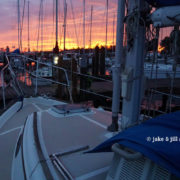






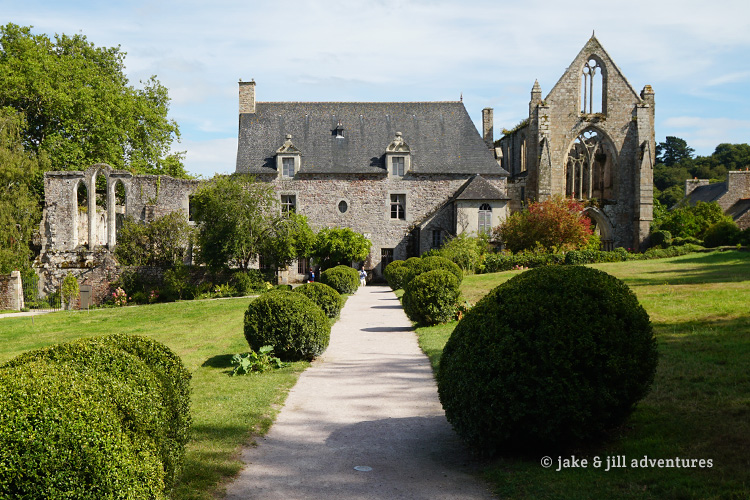
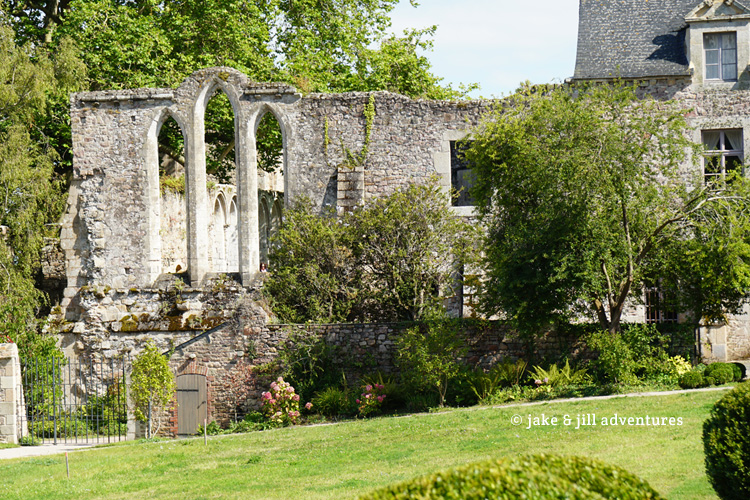
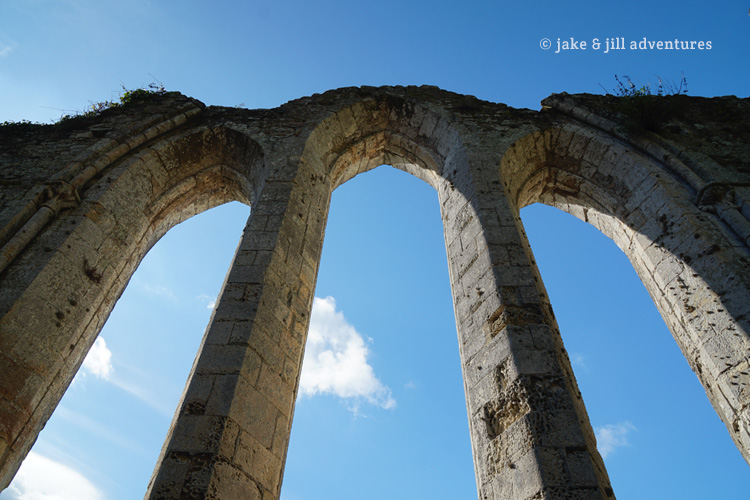
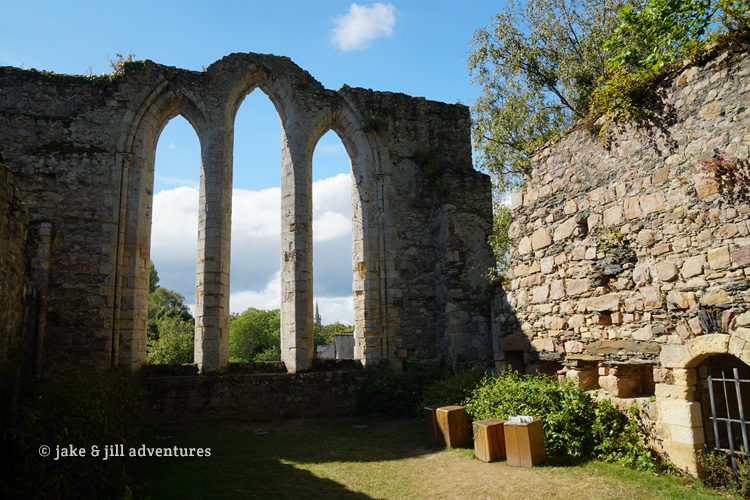
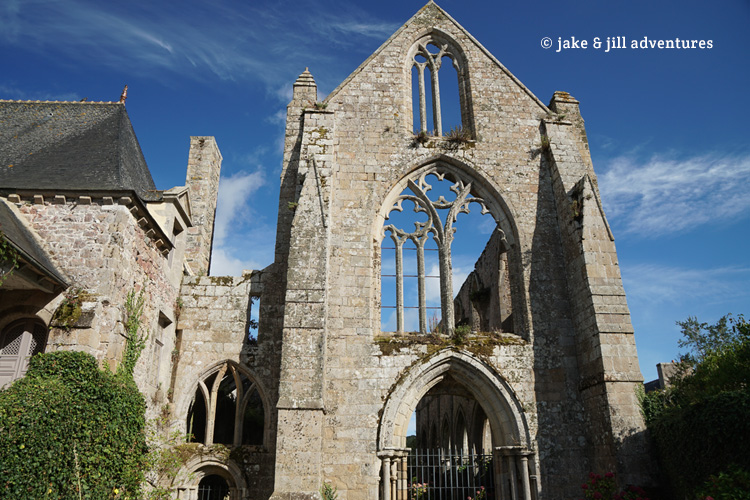
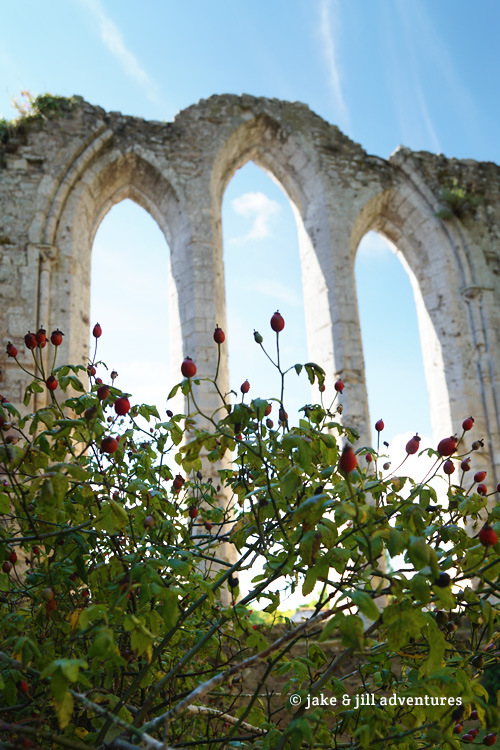
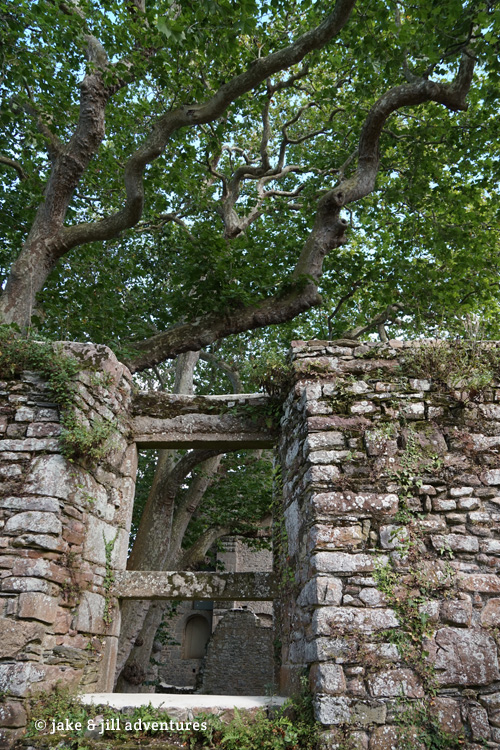
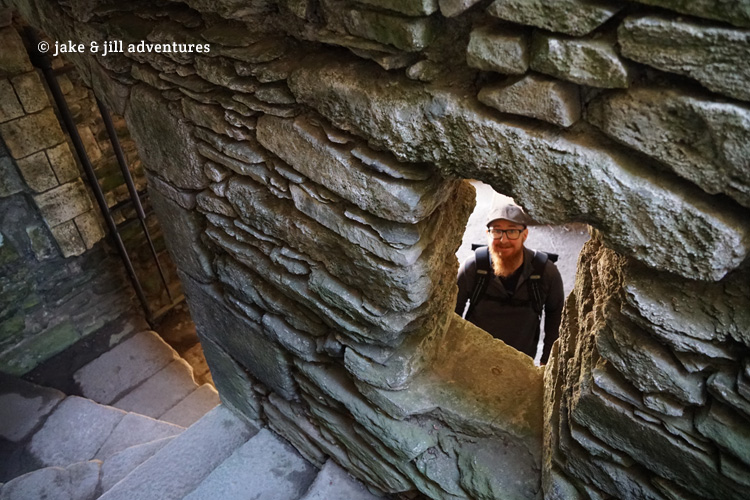
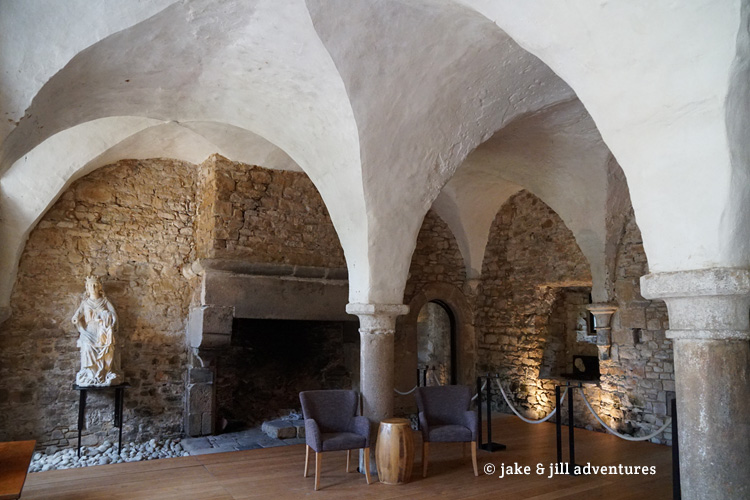
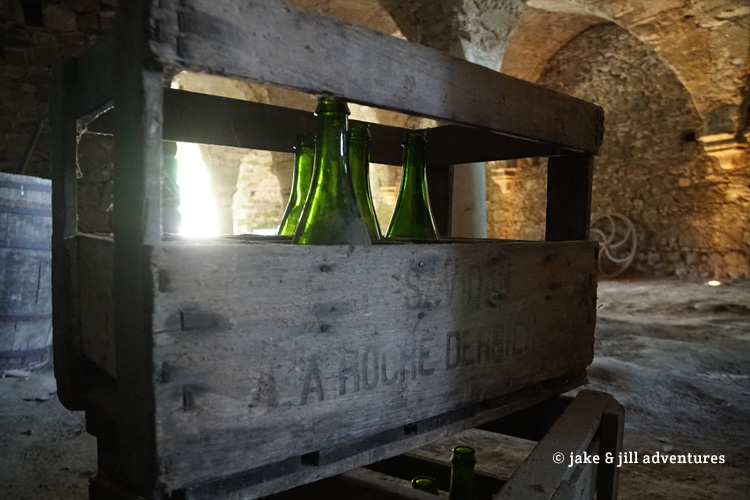
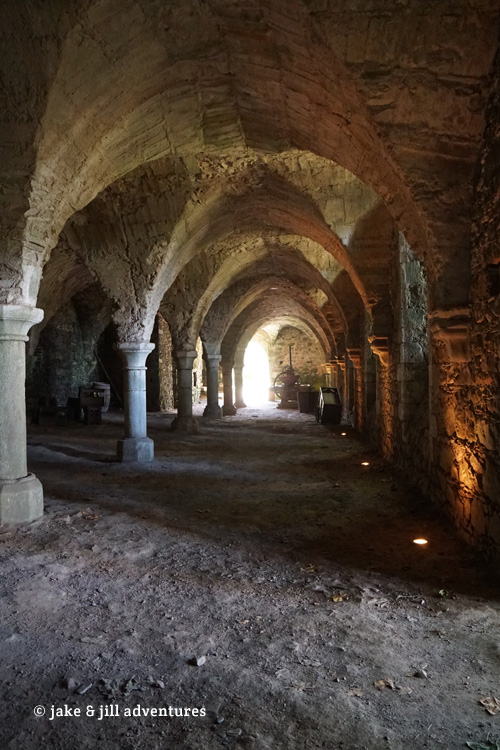
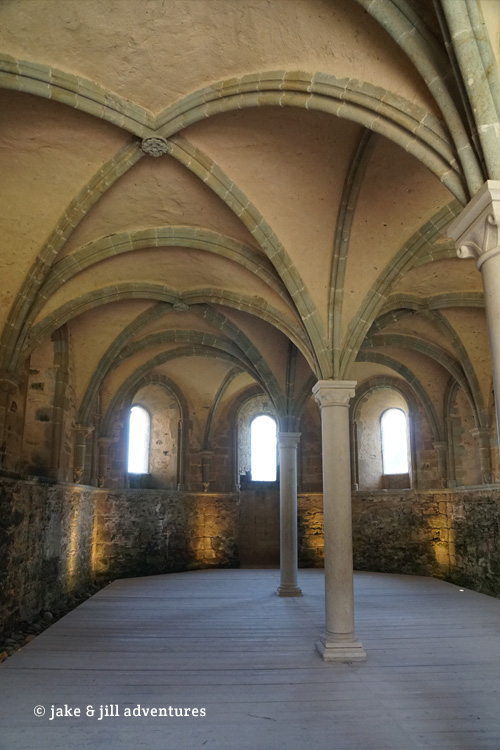
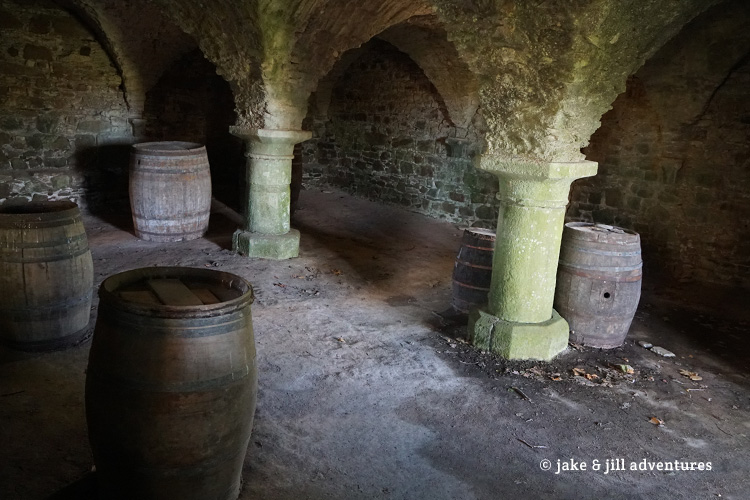
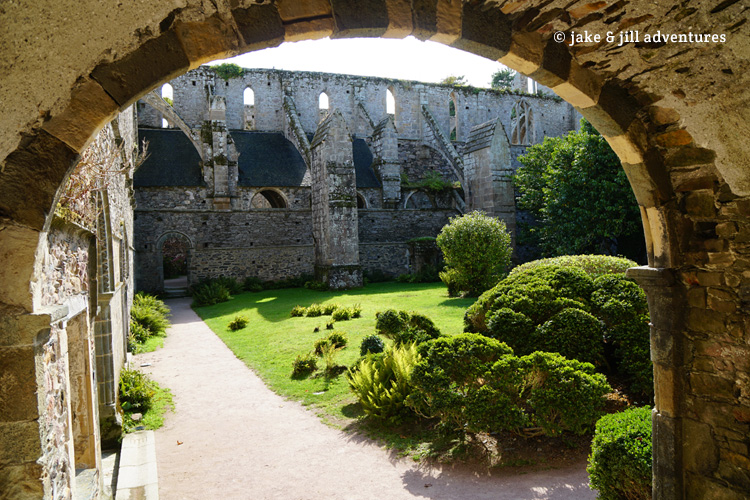
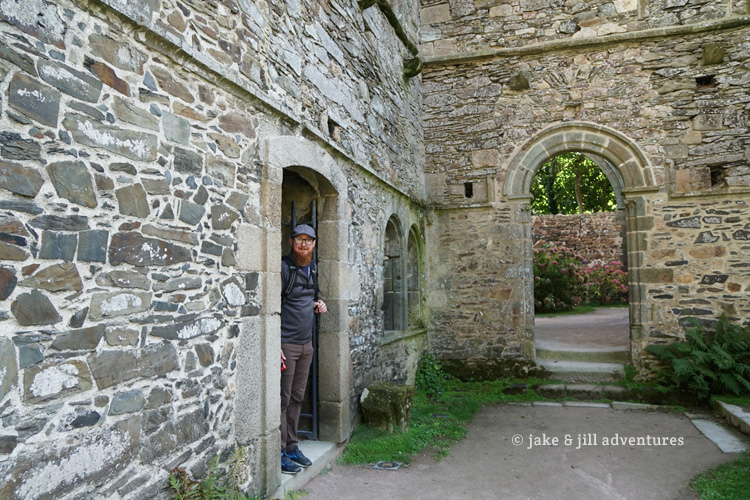
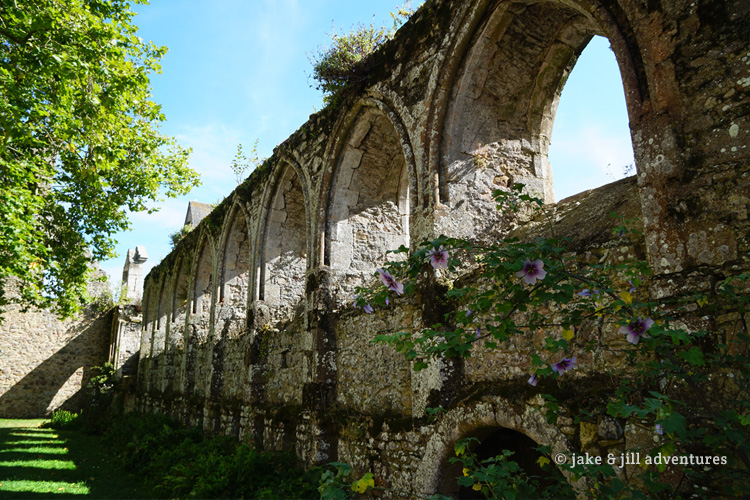
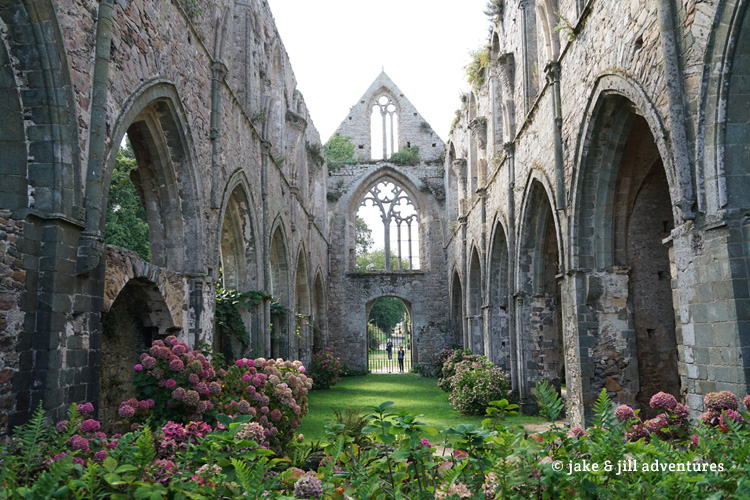
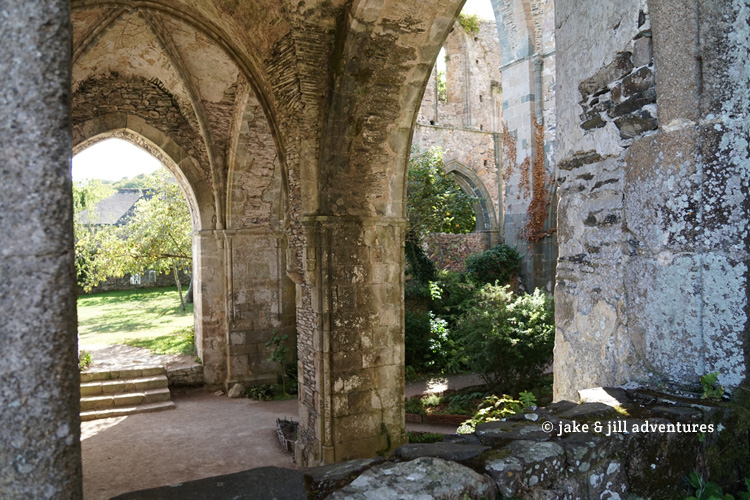
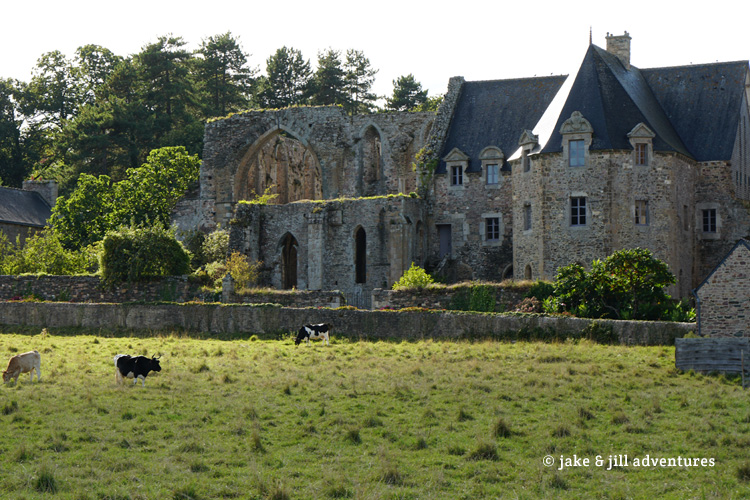
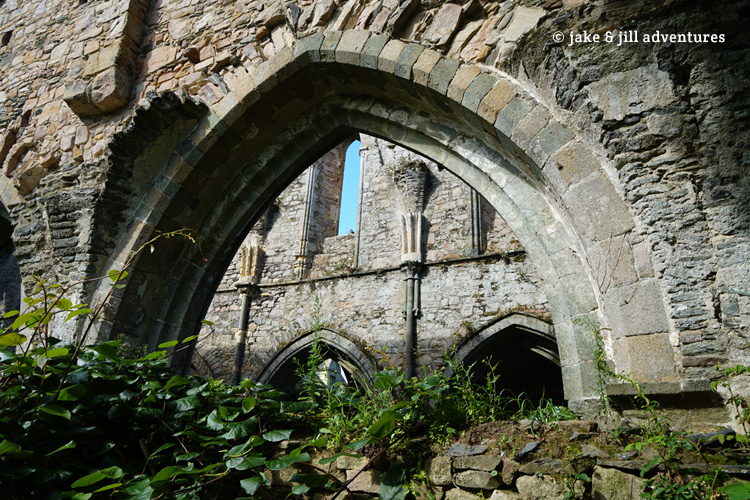
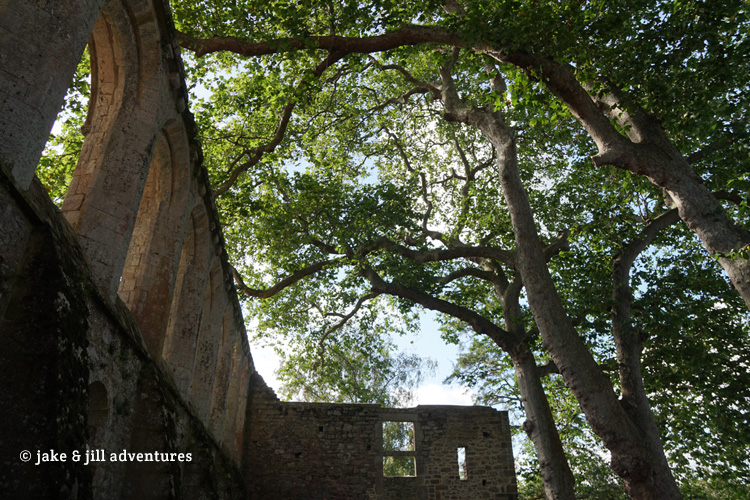
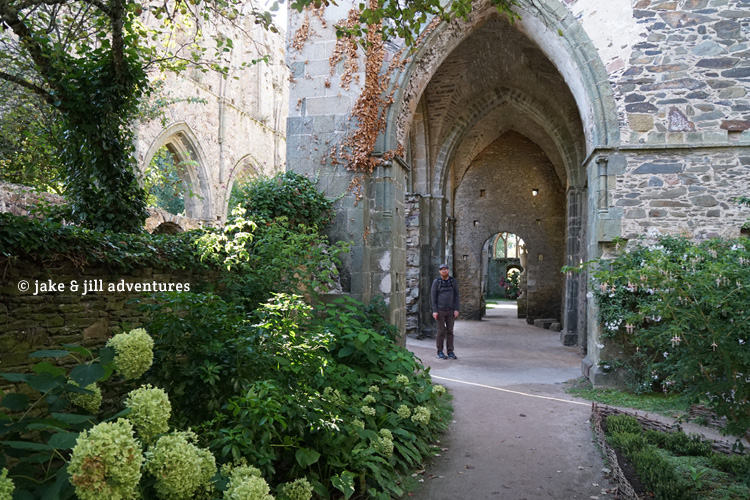
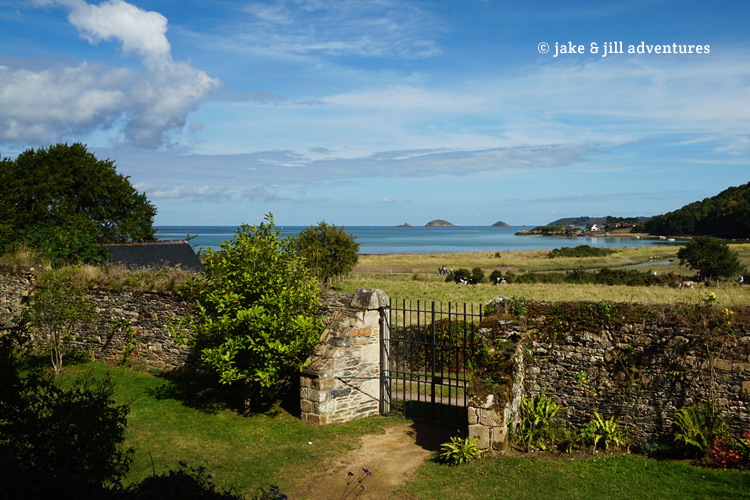
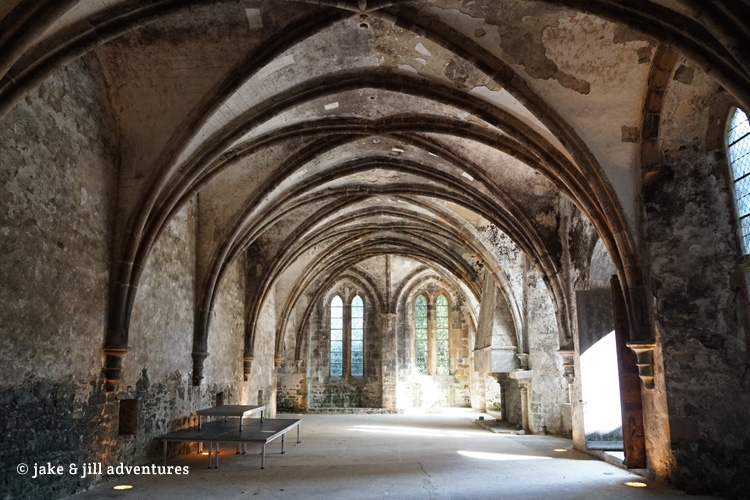
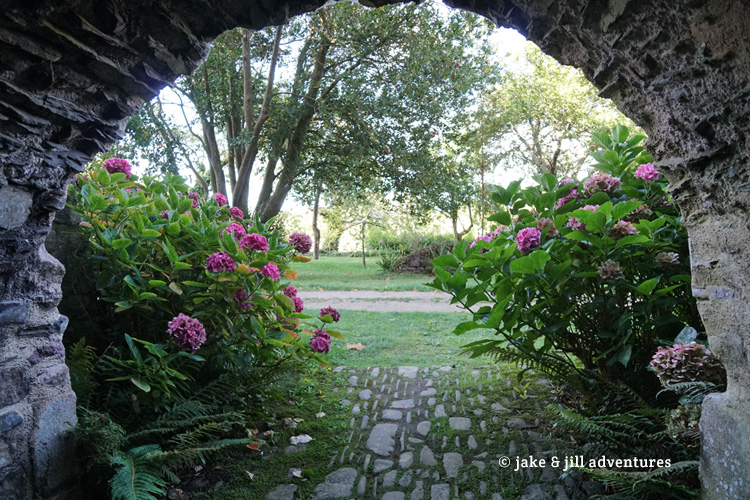
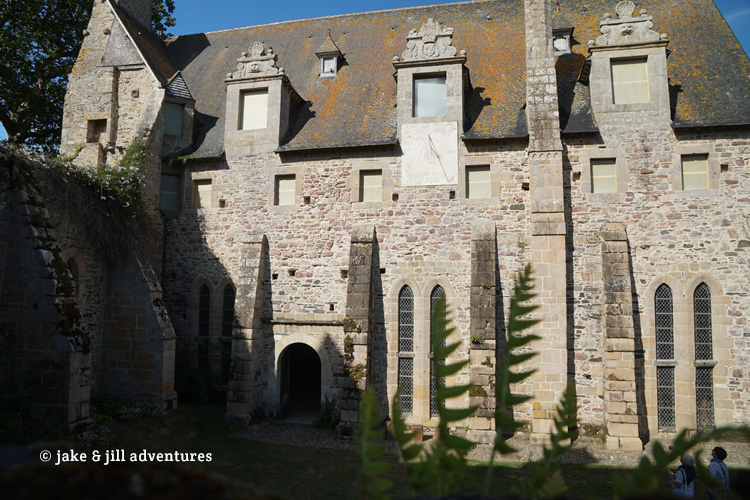
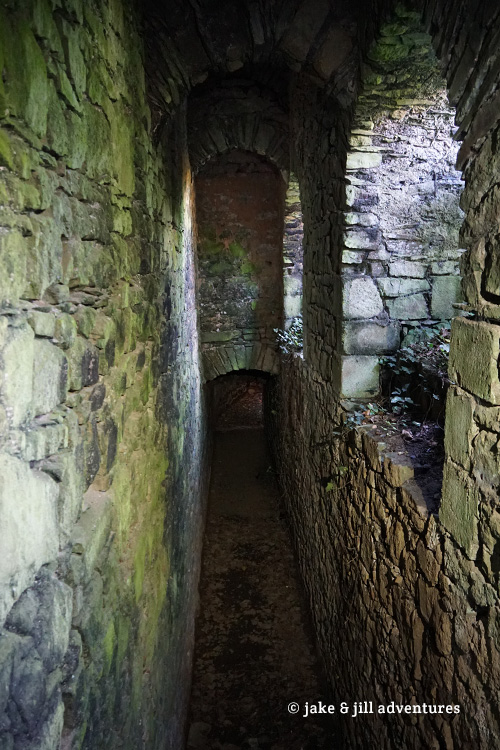
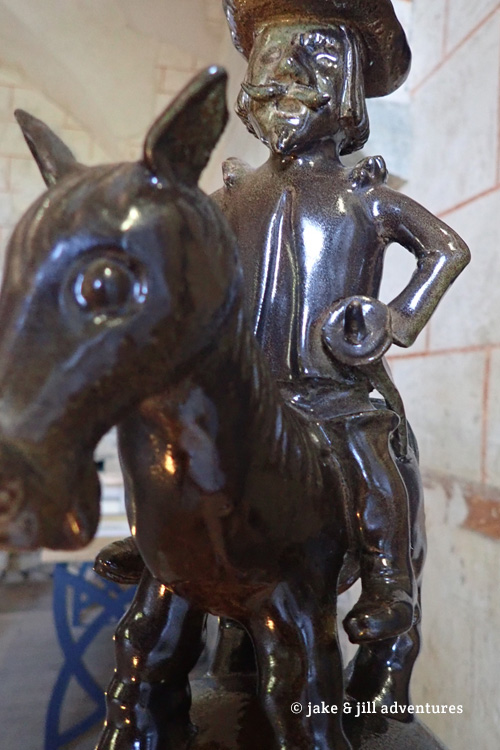
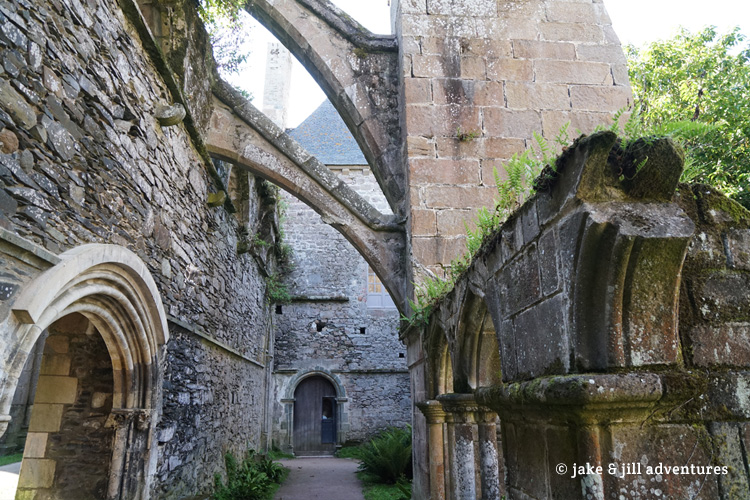
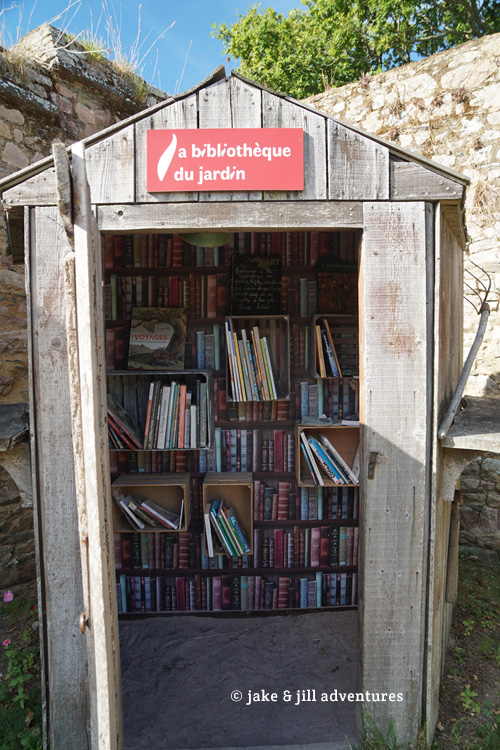
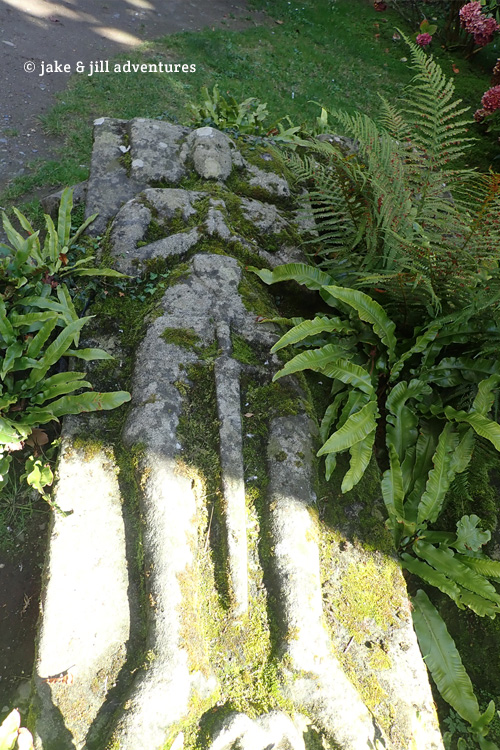
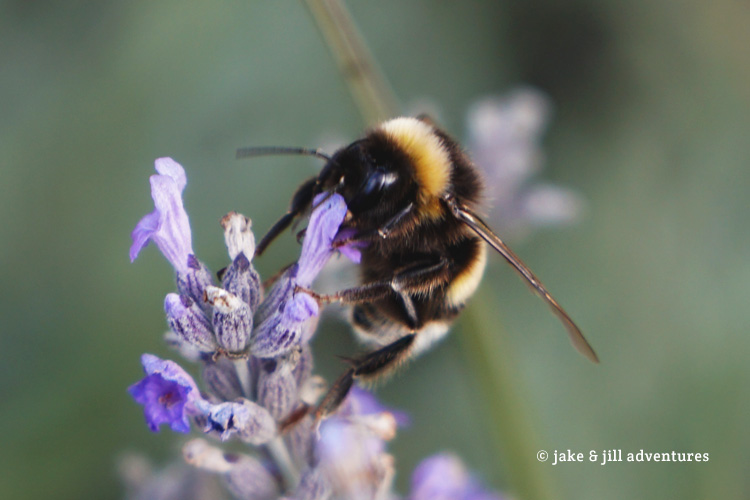
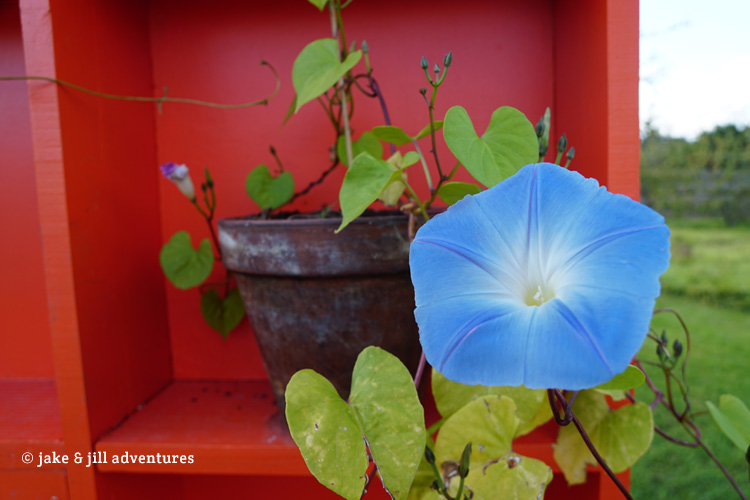
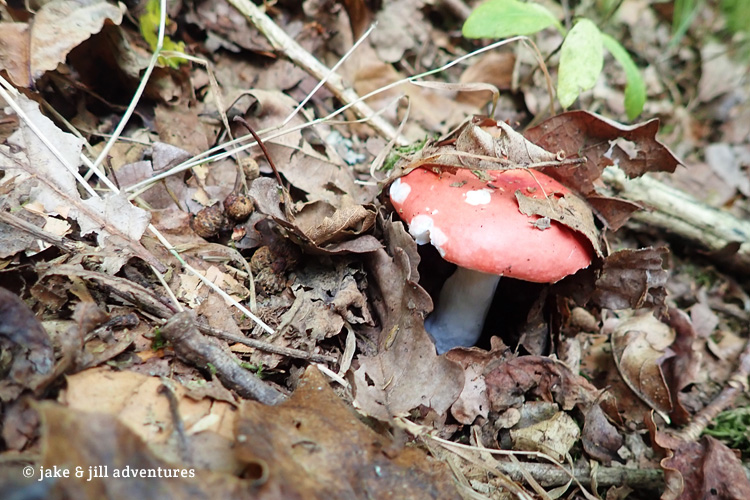
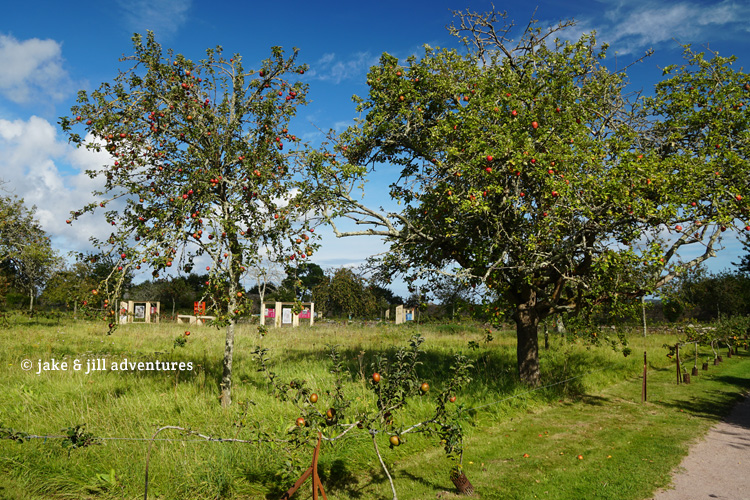
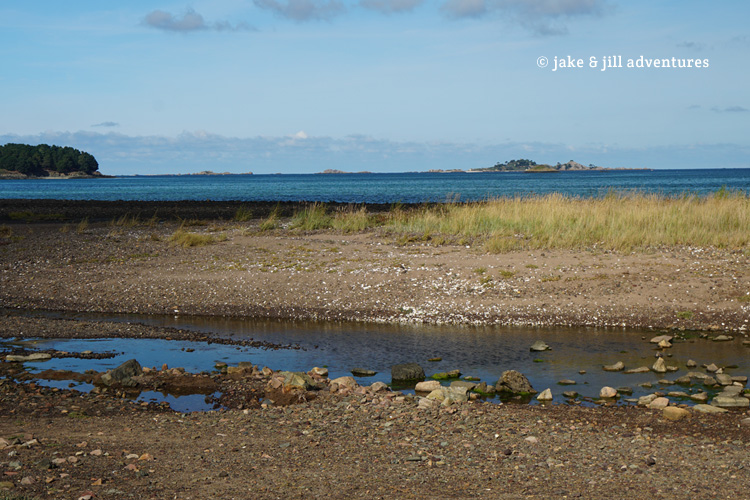
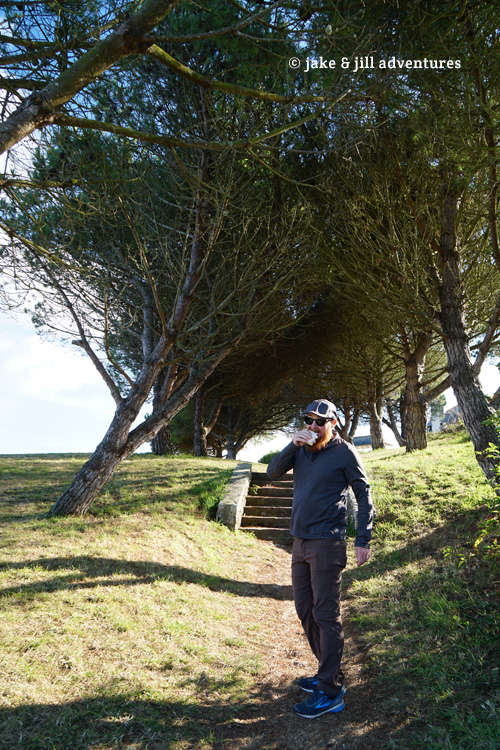
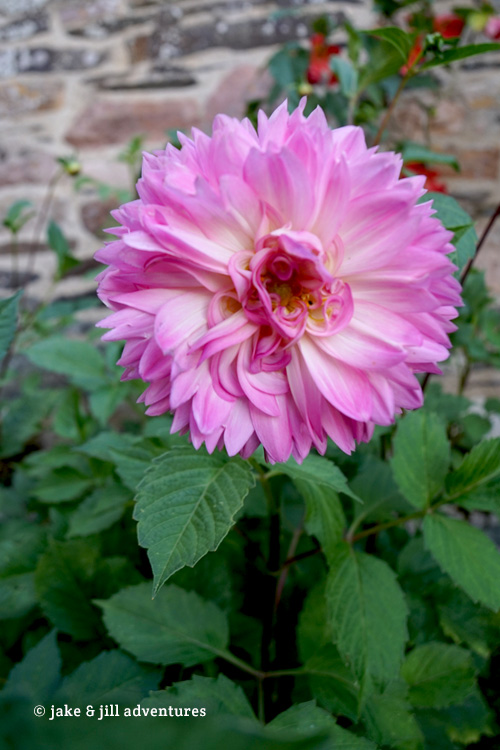
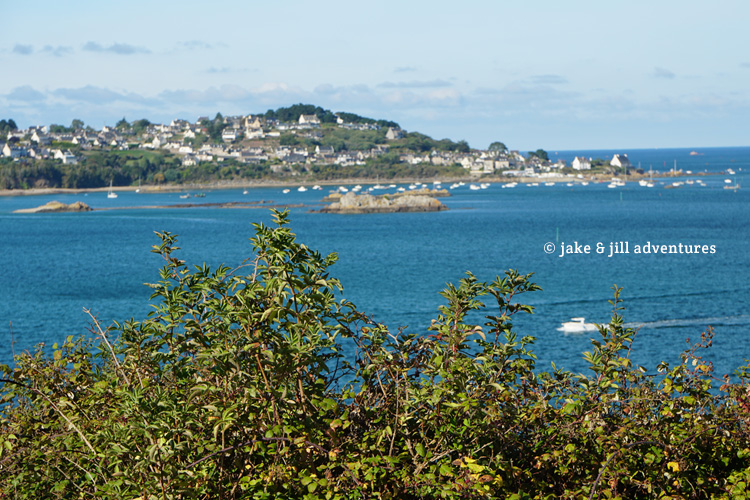
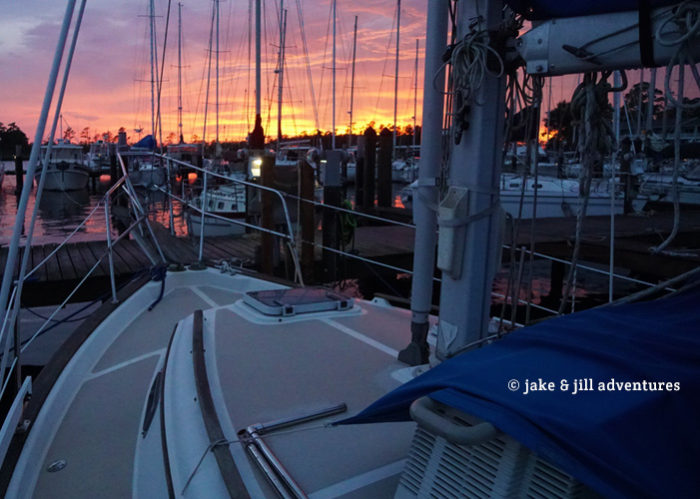


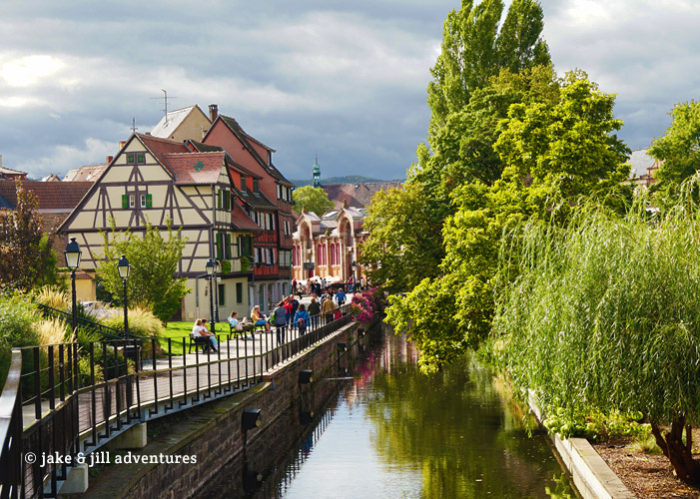
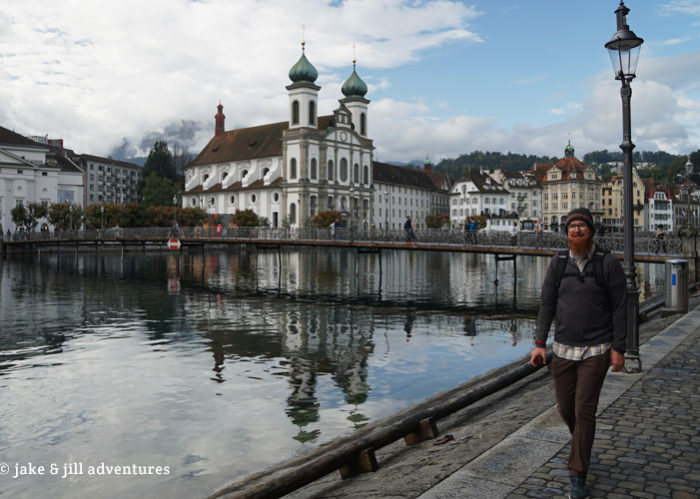
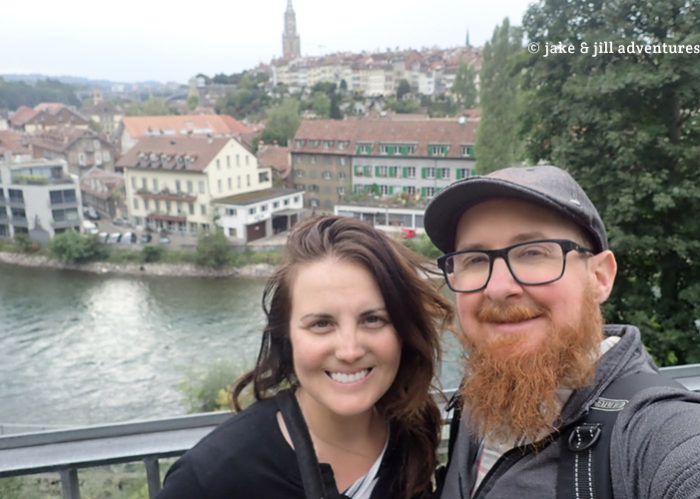



All these images are making me want to take a trip to France. Thanks for sharing your adventures it sounds wonderful.
Thanks so much, Kathy!